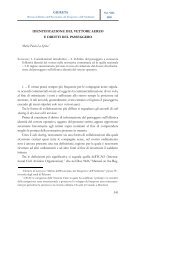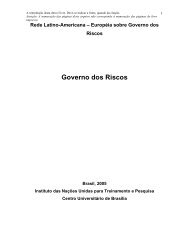Rome II and Tort Conflicts: A Missed Opportunity Abstract Contents
Rome II and Tort Conflicts: A Missed Opportunity Abstract Contents
Rome II and Tort Conflicts: A Missed Opportunity Abstract Contents
Create successful ePaper yourself
Turn your PDF publications into a flip-book with our unique Google optimized e-Paper software.
SYMEON C. SYMEONIDES ROME <strong>II</strong> AND TORT CONFLICTS<br />
182 embodies. Likewise, returning to the snow avalanche hypothetical, the Swiss<br />
operator who engaged in blasting operations near the Swiss-French border in the Alps<br />
should have anticipated that his operations may cause avalanches, some of which<br />
would occur across the border in France. If French law imposes higher st<strong>and</strong>ards of<br />
conduct than Swiss law, why should the operator be allowed to seek refuge in Swiss<br />
law?<br />
In any event, if one is to use Article 17 to protect the tortfeasor in this scenario,<br />
there is little justification for not using the same article in the converse scenario in<br />
which Swiss law imposes higher st<strong>and</strong>ards of conduct for blasting operations than<br />
French law. Whether one thinks in terms of state interest or simply in terms of<br />
evenh<strong>and</strong>edness toward litigants, there is good reason to “take account” <strong>and</strong> indeed<br />
to apply Swiss law in this case. The fact that the operator violated the st<strong>and</strong>ards of<br />
Swiss law implicates Switzerl<strong>and</strong>’s policies in policing conduct within its borders,<br />
even though the consequences of that conduct in this case materialized in France.<br />
Conversely, this case does not implicate the policies underlying the French lowerst<strong>and</strong>ard<br />
rule because that rule is designed to protect or encourage conduct within <strong>and</strong><br />
not beyond French borders. In other words, this is what is known in the American<br />
conflicts lexicon as a classic “false conflict” in which only Switzerl<strong>and</strong> has an interest<br />
in applying its law, or at least to have it “taken into account.”<br />
To be sure, the quoted term may be anathema to <strong>Rome</strong> <strong>II</strong> given its limited<br />
recognition of the role of state interests, despite, for example, embracing the concept<br />
of m<strong>and</strong>atory rules (Art. 16). Instead, <strong>Rome</strong> <strong>II</strong> places a premium on the need to<br />
“ensure a reasonable balance between the interests of the person claimed to be liable<br />
183<br />
<strong>and</strong> the person who has sustained damage,” <strong>and</strong> the Explanatory Report purports to<br />
explain most of <strong>Rome</strong> <strong>II</strong>’s rules in terms of the parties’ expectations. As noted earlier,<br />
the reason for the drafters’s decision to reject a general rule of allowing the victim to<br />
choose between the laws of the places of conduct <strong>and</strong> injury in cross-border torts other<br />
than environmental torts is because such a solution “would go beyond the victim’s<br />
184<br />
legitimate expectations.” However, one can also turn that question around. Does the<br />
application of the law of the state of conduct violate the legitimate expectations of the<br />
tortfeasor who violated the conduct st<strong>and</strong>ards of that state, just because the injury<br />
occurs across the border? The only <strong>Rome</strong> <strong>II</strong> provision that can provide a negative <strong>and</strong>,<br />
in this author’s view, justified answer to this question is Article 17. If the drafters’<br />
intent was to use this article only when it helps the tortfeasor but not when it helps the<br />
victim, then it would have been preferable to suppress the article from the final text.<br />
182. See supra note 163.<br />
183. ROME <strong>II</strong>, recital (16), et passim.<br />
184. Explanatory Report, art. 3, at 11-12.<br />
56 AMERICAN JOURNAL OF COMPARATIVE LAW (2008) PAGE 42 OF 46



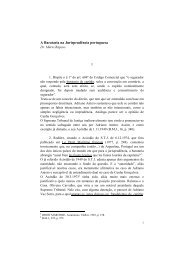

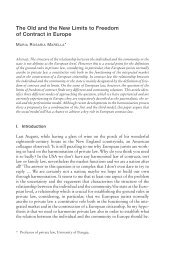

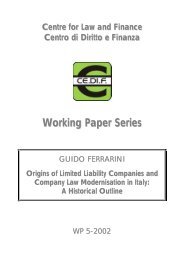
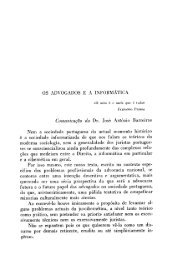
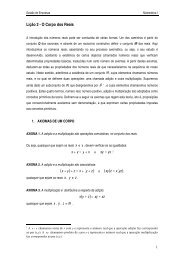
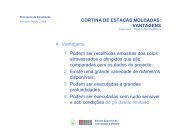
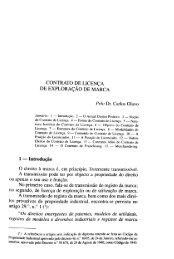
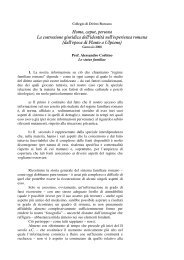
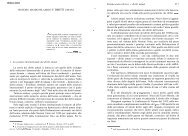

![Luigi Sapio Nozione di islām La parola “islām” [ ] è il mas.dar1 ...](https://img.yumpu.com/15836073/1/185x260/luigi-sapio-nozione-di-islam-la-parola-islam-e-il-masdar1-.jpg?quality=85)
